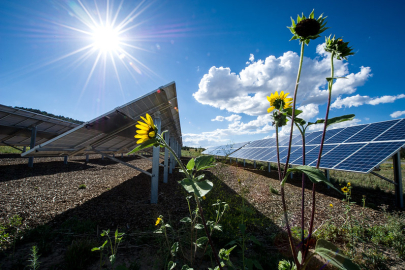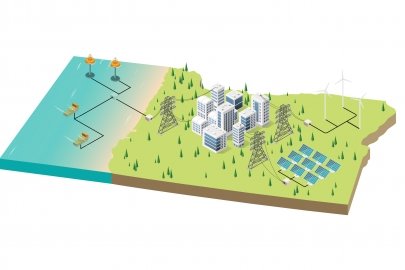A microgrid is a network of connected electrical devices that can be controlled and operated while connected to or disconnected from the larger electric grid. There is no standard definition of a microgrid. Many configurations of components within a microgrid are possible. The components in a microgrid are typically the various electrical loads, energy storage devices such as batteries, localized energy generation such as photovoltaic solar cells, and the ability to control these components. The size, configuration, and controllability are dependent on the nature and objectives of an installation.
The illustration below shows how a microgrid may interface with the utility and offer aspects of controllability of the various energy resources. It is worthwhile to note that microgrid installations tend to be unique and tailored to the location and needs.
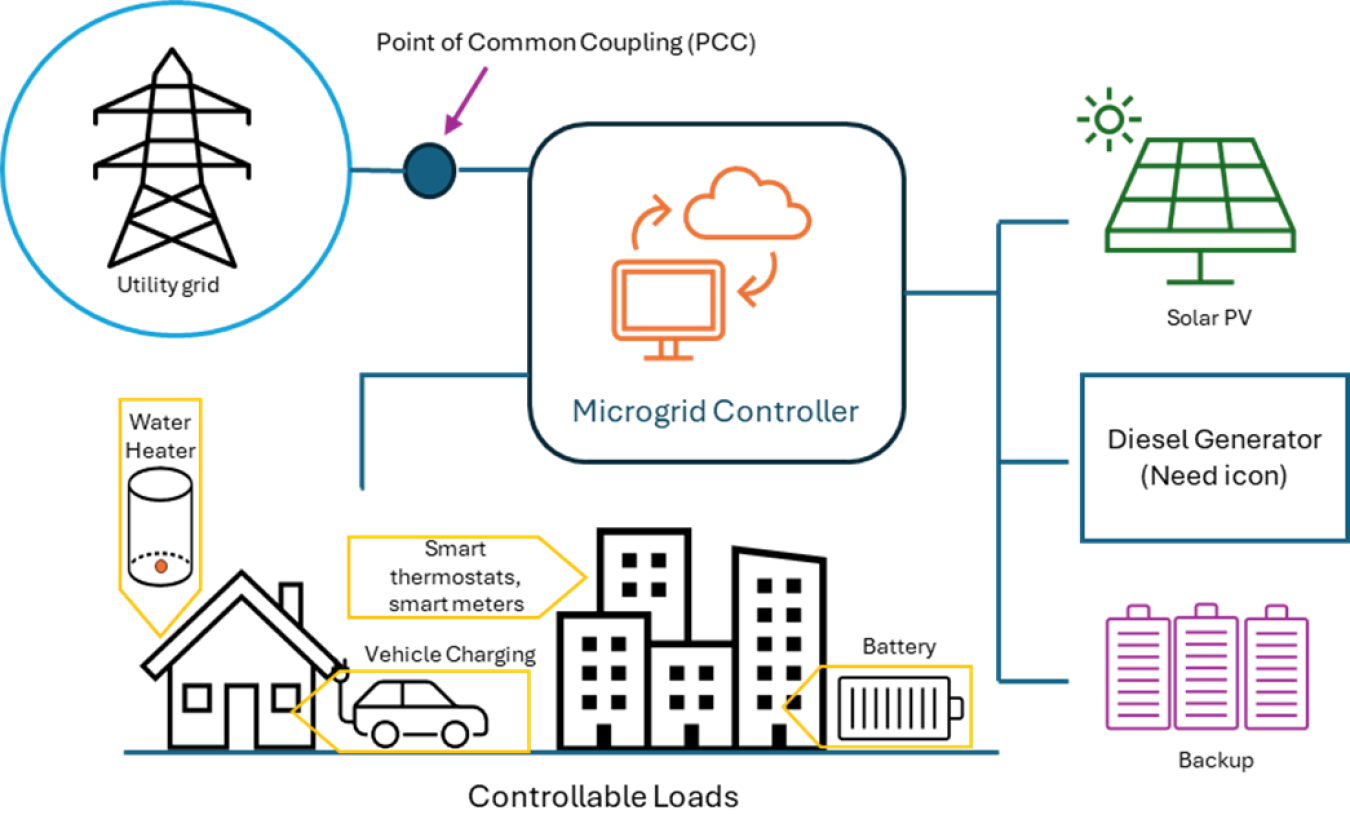
Learn more about microgrids through this brief overview video:
Advantages with Microgrids
Depending on the configuration and scale of implementation, microgrids may yield several benefits. Some of the benefits of microgrids are the following:
Microgrids have the ability to control and shape the amount of load it is drawing from the grid. With a higher number of distributed energy resources (DERs), there are certain voltage and power characteristics that must be maintained. Microgrids offer the ability to regulate these quantities as well as reduce or offset the amount of load presented to the supplying utility. These capabilities result in microgrids being able to support the utility during periods of heavy strain on the grid.
A key benefit of microgrids is that everything is local. There is no requirement to build out expensive transmission lines. The addition of localized energy generation to meet any incremental needs does not require any capacity upgrades to transmission feeders. This can be tremendously beneficial for growing communities.
Microgrids in rural or remote locations are especially lucrative. By carefully designing the amount of local generation through the use of wind, solar, geothermal, or other alternatives, and coupled with adequately sized energy storage, one is often able to electrify rural communities with a reliable energy supply.
The deployment of microgrids has a positive impact on the local workforce and the creation of jobs. Skillsets to operate and maintain a microgrid may lead to further job opportunities and the availability of energy, in turn, spurs economic growth.
Microgrids can be designed and operated to maximize the use of renewable resources. Their overall greenhouse gas emissions and other pollutants can be low while offering efficient, sustainable, and reliable energy.
Challenges with Microgrids
Microgrid implementations can also come with their own challenges. Following are some of the key challenges with microgrid deployments.
Substantial investment is needed to design, configure, and implement a microgrid solution. One must assess current energy needs as well as plan and anticipate for the growth in demand. Feasibility of adding local generation and/or storage must be considered and connectivity of the various distributed resources must also be planned. These considerations may increase the initial upfront costs for a microgrid deployment.
Communities that are considering microgrids often do not have the technical knowhow and must rely on external expertise to help them design and operate these systems. Over time, communities may develop the necessary skillsets to own and operate their microgrids.
The regulatory frameworks for microgrids are only emerging. Mechanisms to regulate microgrids are nascent. Tariff structures, interconnection process, ownership regimes, ancillary services to the grid, among many other considerations are currently underdefined. These lead to complicated scenarios ownership and operating scenarios
Microgrids offer a lot of flexibility; however, depending on how a microgrid is designed, adding more energy resources, such as more generation, storage, or loads can become cumbersome. Sometimes, the amount of growth needs in a deployment can be underestimated resulting in a choice of components that may not scale up very well.
Microgrid Technology
A number of design considerations go into selecting the appropriate components of a microgrid system. It usually starts with a system-scale analysis of the needs of a community.
A systems-scale analysis is usually undertaken to cover microgrid performance expectations and an engineering design establishes its stability and dynamic characteristics. The nature and diversity of existing components such as existing PVs, batteries, electric vehicles, water heaters, heating and air conditioning equipment, and lighting and their times of use are understood. Any existing generation assets such as diesel generators and photovoltaic solar arrays are cataloged.
Various modeling tools are used to run through scenarios and a design that meets the needs of the community is developed. This design may include the addition of additional components within the microgrid.
A community may have various existing legacy devices that still have not reached their end-of-life. Many such devices can be retrofitted to become ’smart’ and participate in the control mechanisms of the microgrid deployment.
Control strategies in microgrids play a vital role in ensuring its smooth operation. There may be various configurations for these controls such as hierarchical, distributed, or hybrid control strategies. The control system also interfaces with the utility grid at one or more points of common coupling (PCC). The controller typically serves as the arbiter to meet energy (or price) optimization goals, scheduling of the activation of various devices in its control, and gracefully degrading the level of service when conditions are suboptimal. The controller hardware is also responsible for switching seamlessly between modes of operation, such as when it gets disconnected from the grid and when it reconnects.
Because of the nature of distributed energy resources with a microgrid, there may be an increased need for development and implementation of protection modes for fault conditions. While the field of protection has been studied and well understood for power systems, some of their specific applications for microgrids are being actively researched.
It is apparent that the size, number of devices, the total energy generated or served, and the variety of devices add to the level of complexity of a microgrid. Their configuration and coordination using controls can also become complex. The S&C Electric Company presents the following chart to appreciate increasing levels of microgrid complexity.
Applications for Microgrids
Following are the major categories for the application of microgrids based on their primary intended function and operation.

Stand-alone vs. networked microgrid example. Source: Sandia National Laboratories Strategy White Paper on Microgrids.
A microgrid designed for an individual customer (e.g., a data center) connected to a central utility system for enhanced service quality and resiliency. Microgrid assets would be located “behind” the utility meter. Such microgrids can be owned and operated by the customer, utility (i.e., under a fee-for-service arrangement), or a third party microgrid developer, or some combination thereof.
A microgrid serving a single- or multi-owner contiguous set of facilities (i.e., a campus) typically behind-the-meter of a utility grid. These systems may serve customer load on a full-time basis and/or be designed to provide back-up islanding services. Department of Defense bases, universities and airports are common sites for campus-level microgrids. Utilities may or may not be involved in campus-level microgrid operation beyond the point of common coupling.
A microgrid that serves one or more customers designed specifically to provide uninterrupted service to critical infrastructure and vitally important community assets. Government- or ratepayer-funded investments in these microgrids are common due to the social values associated with maintaining critical services during power outages.
A fully operational microgrid, sometimes referred to as a mini-grid, serving an electrically isolated community without connection to a larger electricity grid. Remote microgrids are a “one-stop shop” for all services, from provision of energy to maintaining stability and power quality. These are already common for service to islands and geographically remote/rural settings.
A microgrid serving energy to two or more different properties nested within the service territory of a utility. Community microgrids can operate independently from the grid but are otherwise connected to the utility network through a point of common coupling (PCC). They are a means to increase local energy independence and resilience.
A type of community microgrid operating a feeder segment or substation balancing area to provide non-wires alternative services as a primary use, while simultaneously offering partial or full resiliency services to customers during utility grid outages.
Feeder segments or substations configured to be islandable microgrid hubs with all hardware installed except generation. Portable generators are staged at islanding point by truck, rail, boat or helicopter, and configured to plug into feeder segment or substation microgrid hubs when needed. Temporary microgrids are a resilience-only application (i.e., no value stacking opportunities) but do provide flexibility for where microgrids can be quickly deployed and is thus a form of “flexible resilience.”
A prospective future microgrid application in which sub-service-territory balancing areas, substations, feeder segments, or transformers act as clustered and nested microgrids, maximizing reliability and resilience among them. Most likely, this use case would consist of a series of community microgrids that also provide NWA characteristics in order to justify their investment.
Utilities sometimes receive special regulatory approval to build-own-operate microgrids because of their novel and unique nature for the jurisdiction and the need to foster learning in the utility and regulatory environment. Realistically, a utility pilot will attempt to pursue one of the above use cases.
Source:
Enabling Regulatory and Business Models for Broad Microgrid Deployment.
For further information, see:
Stanton, T. Are Smart Microgrids in Your Future. National Regulatory Research Institute, Silver Springs, MD, 2012.
Zinaman, Owen, Joseph Eto, Brooke Garcia, Jhi-Young Joo, Robert Jeffers, and Kevin Schneider. White Paper: Enabling Regulatory and Business Models for Broad Microgrid Deployment. No. NREL/TP-5R00-84818. National Renewable Energy Lab.(NREL), Golden, CO (United States), 2022.
Market Status and Cost Trends
Microgrids are experiencing fast growth and are expected to reach about 10GW of installed capacity by 2025. This will constitute about 1% of the electric grid. The future electric grid is expected to be comprised of more than 35% of distributed energy resources and a significant majority of them are expected to be in microgrid configurations.
Individual microgrid installations are unique and therefore it is hard to generalize their costs since every installation is has its specific design and operation characteristics. There is significant variability in the $/MW or $/MWh between installations. The National Renewable Energy Laboratory (NREL) collected data from a large number of deployed microgrids and inflation adjusted those costs for the year 2016. The following map illustrates the database locations for the survey.
As part of the survey, the following microgrid components were surveyed:
- DERs: diesel, natural gas, combined heat and power (CHP), biofuel, solar PV, wind, fuel cell and energy storage
- Microgrid controller: at device level, at higher level, or enterprise-level centralized
- Additional infrastructure: distribution system infrastructure, information technology communications upgrades, metering, etc.
- Soft costs: engineering, construction, commissioning, and regulatory.
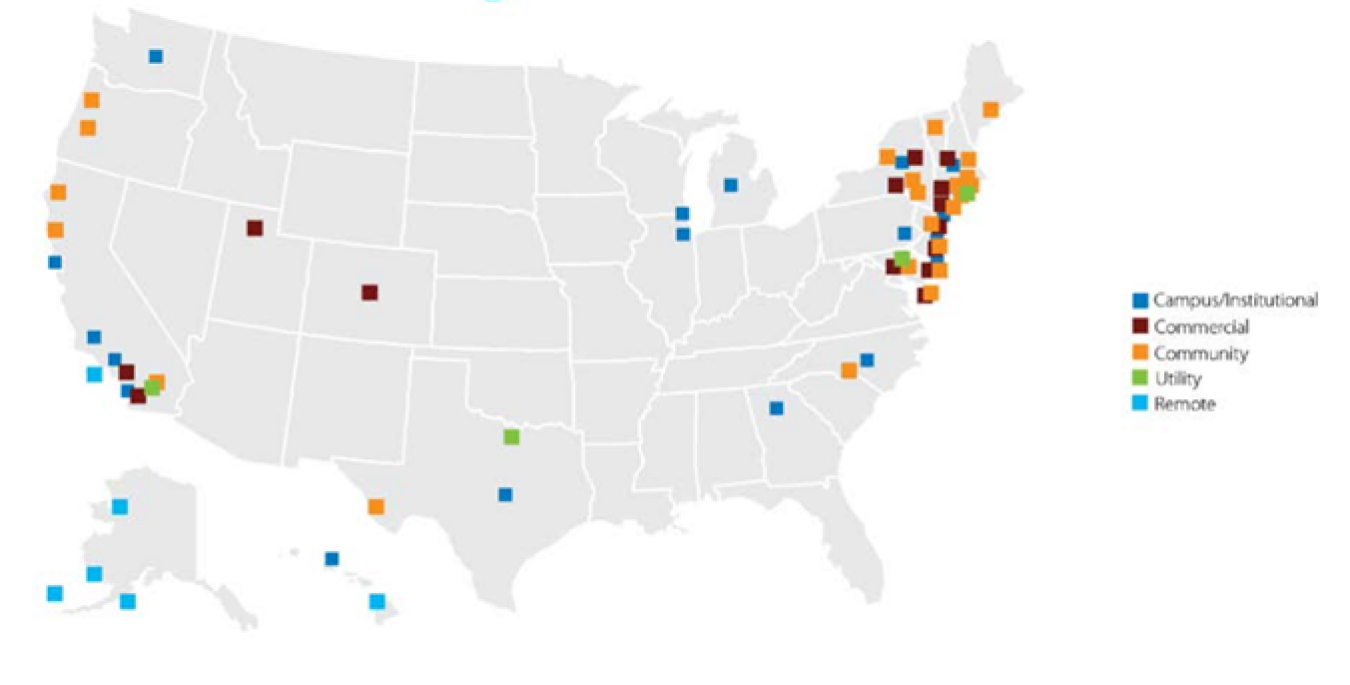
Featured Project
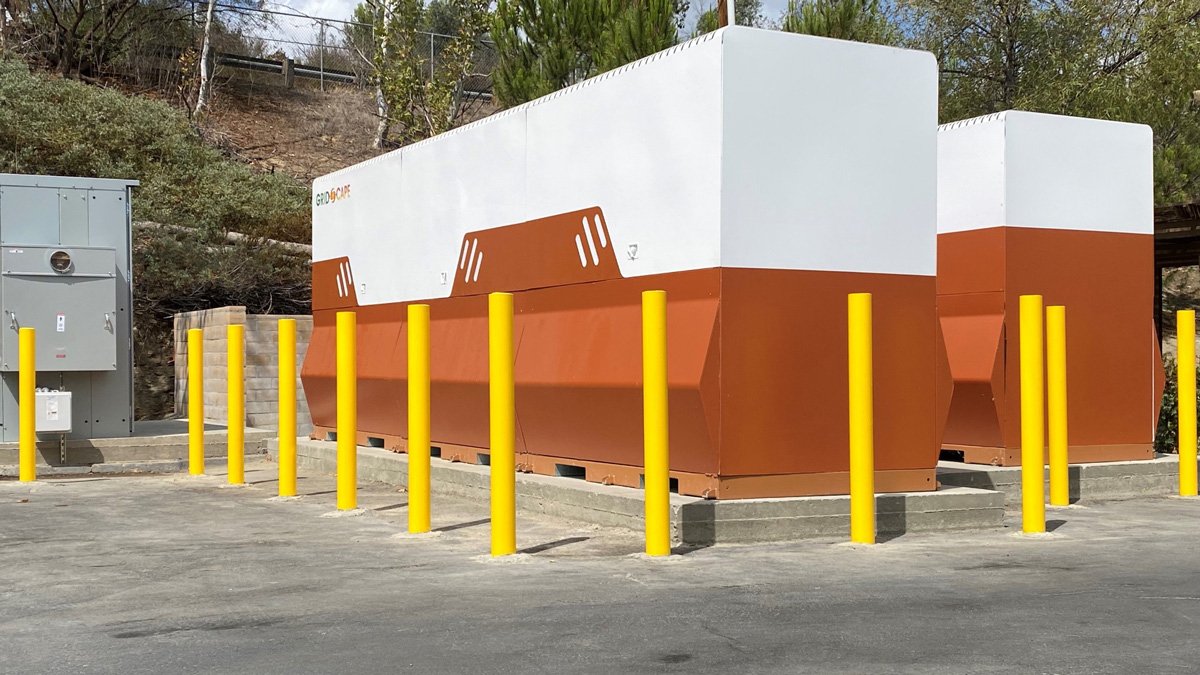
Microgrid Boosts San Pasqual Band’s Energy Sovereignty and Security


